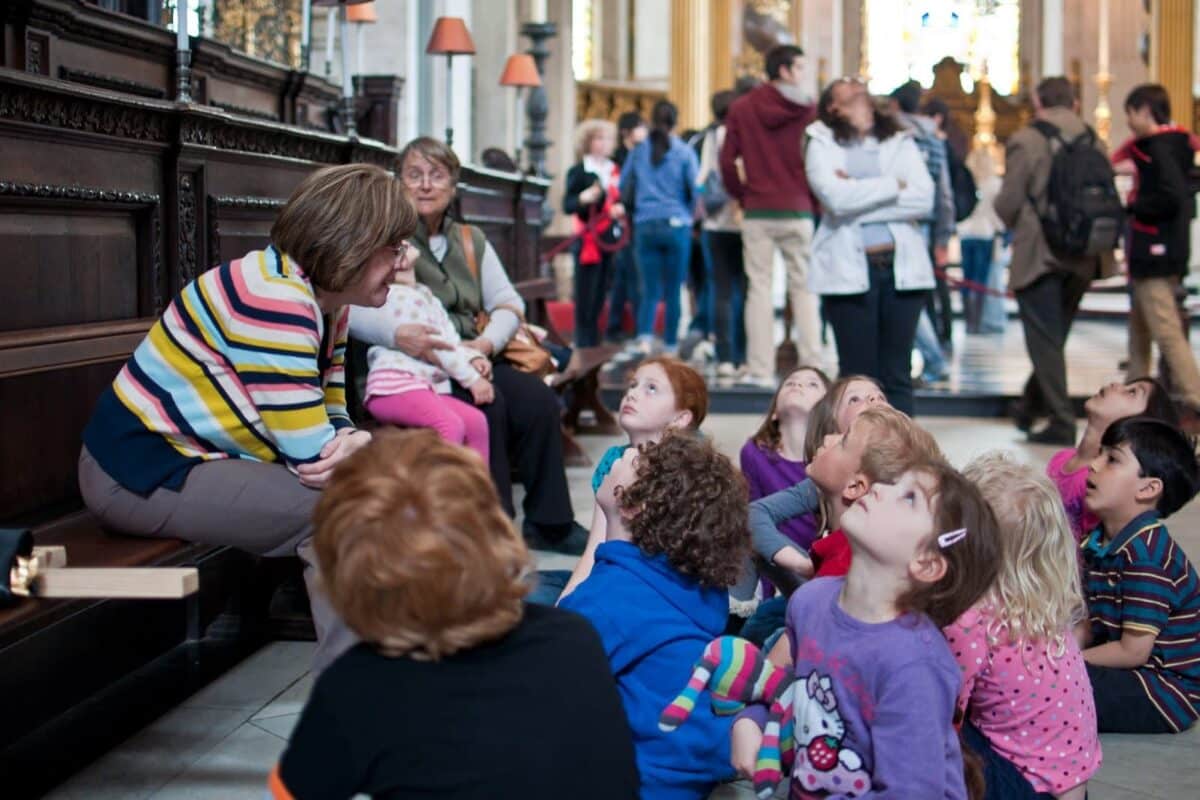When I was a child in church, we all sat in the same place (at the front, the under-8s on small wooden chairs in front of the 8 to 11s. We were quiet (well, most of us), well-behaved (well, most of us) and stayed in our seats (well… oh you get the idea). Fast forward to my church today: children career around the aisles, trailing praise flags as they run. They jump and dance and sing, up and down the big space to the side of all the chairs. And the adult congregation, for the most part, are happy to let them do so. In fact, when the children leave for their groups, the service feels just a little bit less joyful.
Now, I’m not saying that this congregation has got it right. Various parts of the church service are inaccessible for most children and so their engagement in what is going on can be hit and miss. However, the very fact that children can express themselves as part of the church family when they want to is heartening.
Having children in church changes its character, it’s unavoidable. In fact, I would say that it’s a change that should be welcomed. However, there seem to be churches who try to hold back the tide and keep children in a box. (Not literally. That would raise serious safeguarding questions…) What I mean is that they are happy for children’s activities to happen around the fringes, but not so much that it alters the shape of the ‘adult’ service.
However, there are many ways to involve children in a service which would transform worship without major changes to liturgy or practice, and would not feel like the church was dumbing down or only serving families with young children. Here are a few suggestions:
Get children involved in serving
Are there any ways in which children can get involved in the running of services or church events? Can they help out on the welcome team? How about serving refreshments? Joining the sidesperson rota? Finding ways for children and adults to serve alongside each other enables all to feel part of the church family, and also helps builds the faith of young and old alike. (Of course, you need to work within your church’s child protection policy!)
Help children understand what is going on
To many children, a liturgy is such an alien thing that it puts a barrier between them and the communal worship of the church. You can start to overcome this by mirroring the liturgy in your groups. Say some of the prayers from the service in your groups, explaining them the first few times you say them. If your church lights a candle at a certain point, do so in your children’s group. Share the peace, take a collection, sing a song… This way, the children will become familiar with what happens in a service and join in more meaningfully.
You could also try the idea of a liturgy box. These are collections of the symbols and actions that children will see in church and can be adapted for the different kinds of services. Communion and baptism services can be opened up to children in this way, as can ordinary services, as children get to handle the same accoutrements of worship as they see being used at the front of the church.
Work with church leaders to create more child-friendly parts of the service
There are times when you can actively involve children at the front. Reading the Bible and leading prayers are two easy starting points, as is inviting children to sit or stand where they can watch communion being blessed and shared. What else might you do?
Allowing your church family to be changed by the children in it may not be an easy ride. Many do not like change and will actively resist it. But, with grace, humility and patience, we can help create a church where children and adults can take part and worship together, showing how amazing and dynamic the body of Christ can truly be!
Alex Taylor is Children’s Ministry Trainer for the Diocese of London.
